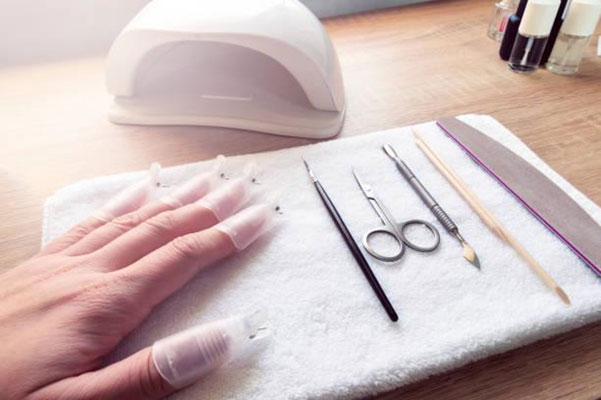
In recent times, gel nail polish has transformed the world of nail care. Gel polish has become a fundamental element in numerous salons and individual nail upkeep regimens, providing a more enduring and robust substitute for traditional nail polish.
Yet have you ever pondered the scientific intricacies underpinning this revolutionary cosmetic item? What enables gel nail polish to offer an impeccable outcome that endures the rigors of daily use? Within this piece, we plunge into the captivating realm of gel nail polish, revealing the scientific concepts that render it so efficient.
Molecular Composition of Gel Nail Polish
Gel nail polish is a specialized nail coating that has garnered immense popularity in manicures. Unlike conventional nail polish, it is crafted from a distinctive fusion of molecules termed oligomers and monomers. Oligomers are relatively compact, partially polymerized particles, while monomers are individual components capable of uniting to forge more extensive chains.
When melded together, these oligomers and monomers yield a compact and supple gel-like substance. This molecular blend constitutes the cornerstone of gel polish, empowering it to deliver a longer-lasting and exceptionally robust finish compared to traditional nail polish.

UV and LED Curing Process
UVand LED lights are specialized sources of light crucial in the application process of gel nail paint. UV lamps emit ultraviolet rays, while LED lamps emit light from a specific diode. They act as catalysts in the hardening process, crucial in transforming the gel from a pliable substance to a robust and long-lasting coating.UV lamps typically emit a broader range of light, whereas LED lamps emit a narrower beam. Notably, LED lamps are more energy-efficient and have a shorter hardening time, contributing to the overall efficiency of gel nail paint application.
The wavelength of light emitted by UV and LED lights holds the solution to the hardening process. This light interacts with the oligomers and monomers within the gel nail paint. These essential foundational elements of the polish undergo a transformative reaction when exposed to specific wavelengths of light.
Furthermore, the energy from the light triggers a chemical response in the oligomers and monomers, causing them to connect. This creates a linked chain network, consolidating the gel into a sturdy and resilient outer layer.
Integral to the hardening process is a photoinitiator within the gel nail polish. As the UV or LED light is emitted, the photoinitiator absorbs this energy. This absorption prompts the photoinitiator to break down into responsive elements. These responsive elements initiate a chain reaction, producing the oligomers and monomers to combine.

Creating a Seamless Protective Layer
1. Comparison with Traditional Nail Polishes
One of the standout characteristics of gel nail polish is its ability to create an uninterrupted, safeguarding coat on the nail. This distinguishes it from customary nail polishes that frequently rest on the exterior and may be susceptible to chipping or flaking.
While standard polish may offer a burst of hue, gel nail polish elevates it by attaching directly to the nail. This culminates in a final touch that appears flawless and showcases remarkable robustness.
2. How Gel Nail Polish Adheres Directly to the Natural Nail
The attachment of gel nail polish to the genuine nail is proof of its sophisticated composition. In contrast to classic nail polishes that depend on natural evaporation, gel polish undergoes a chemical transformation called polymerization.
This transpires throughout the solidification phase under UV or LED light. The gel's molecular arrangement empowers it to securely fuse with the nail base, establishing a robust groundwork. Consequently, the gel polish becomes an intrinsic component of the nail, offering a degree of bonding that surpasses typical polishes.
3. The Benefits of a Seamless, Protective Barrier
Apart from its visual attractiveness, the seamless protective barrier established by gel nail polish provides a spectrum of advantages. It functions as a safeguard, shielding the nail from the routine deterioration brought about by activities such as typing, cleaning, and additional manual chores.
This defense also protects against potential harm from outside factors like moisture, cleaning agents, and potent chemicals. Additionally, the shielding stratum adds to the overall persistence of the manicure, guaranteeing that the gel polish sustains its unblemished appearance for an extended duration. This facet of applying gel nail polish makes it an enduring and resilient substitute for conventional nail polish.

Wrapping Up
In the world of nail upkeep, gel nail polish is evidence of the extraordinary interaction between chemistry and attractiveness. The accurate composition of oligomers and monomers, paired with the altering impacts of UV or LED setting, leads to a manicure surpassing conventional polish's boundaries.
The scientific principles behind gel nail polish extend its endurance and add to its faultless appearance and exceptional durability. Therefore, on the subsequent occasion, you can appreciate your impeccably polished nails and acknowledge the minute marvels of science that render it all achievable.




















Comments (0)
Write a Comment